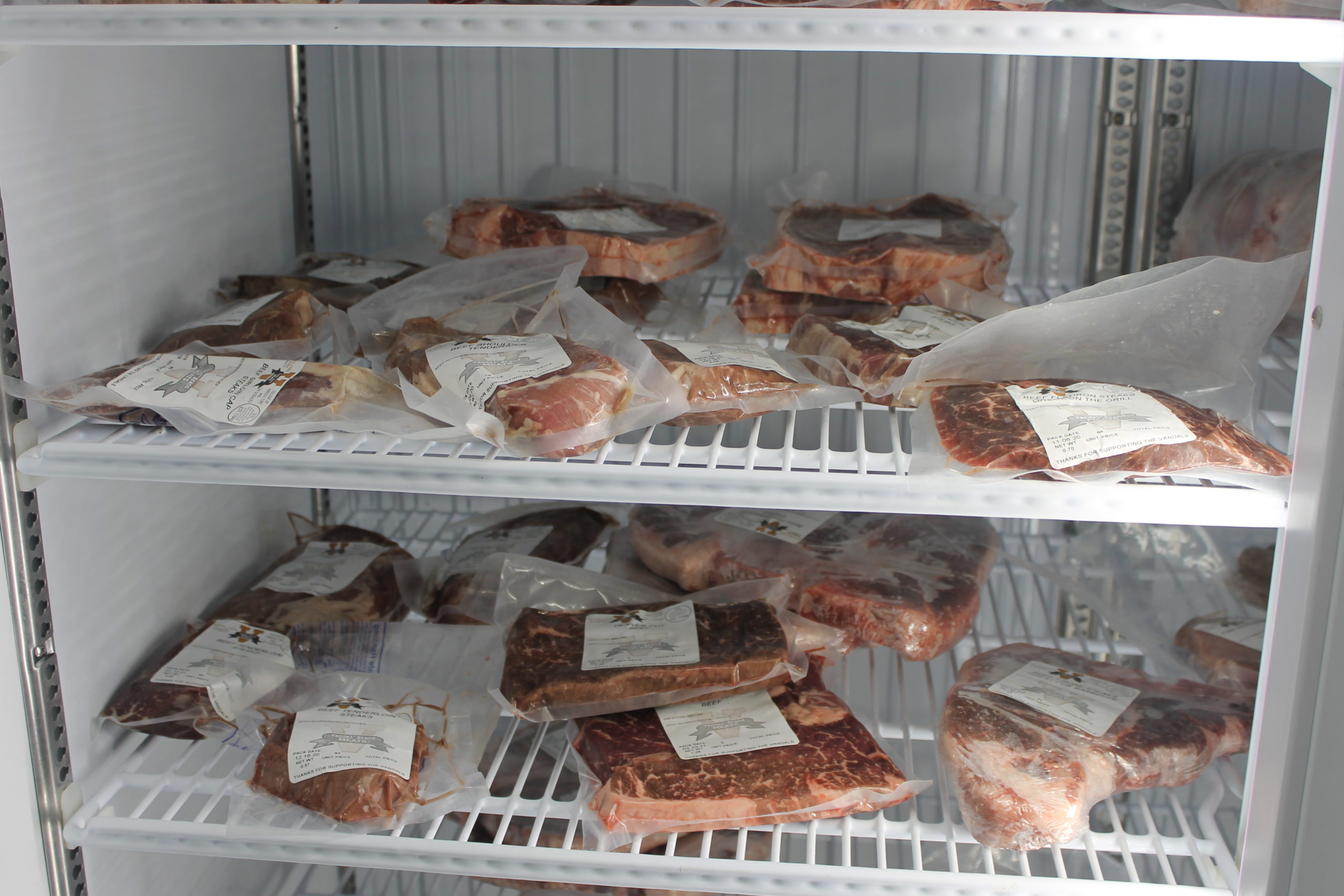On the corner of Sixth Street and Perimeter Drive, the Vandal Meats lab rests as an important pillar of the University of Idaho and its students’ and community’s experience.
The original facility was built in the late 60s, strictly for research purposes, as well as teaching for the university. The name, Vandal Brand Meats, was started in 1988 as a retail name to sell products under.
It developed as a way to profit off of the livestock brought in for teaching purposes. Instead of losing the money, the brand began to sell it to offset teaching costs. The brand has become increasingly popular by reputation over the years and now does extensive retail as well as continuing teaching and research.
What takes place daily at Vandal Meats? Their retail front is open five days a week, with a consistent customer flow that can choose from a wide meat selection. Producers in the area can also schedule livestock to be brought in for processing.
During the spring semester, there is an animal product course taught two days a week, where students can get hands-on experience in the meat lab. Meat production is also happening quite often in the facility, such as making sausage or cutting beef, pork or lamb to fill retail orders.
The brand works in fresh processing as well, like fresh sausage, smoked sausage, ham, bacon and much more. There are also harvest days where livestock is brought in, and meat is harvested to meet teaching and retail demands.

The demand for Vandal Brand Meats has grown over the years. When James Nasados, the meat lab manager of Vandal Meats, first started working as a student employee, the demand was very seasonal. The fall was busy, due to local and state fairs, and the winter was filled with the holiday rush, Nasados said. Now, as the manager, he has noticed the demand increase year-round.
“It’s become far less seasonal,” Nasados said. “We still have spikes in the fall and the holiday rush, but spring, which historically has been our slow time, has become very busy as well. The demand has definitely become steady.”
Aside from being a lucrative business, Vandal Brand Meats is a major benefit to UI students and the surrounding community. Students not only are able to learn the process in their lectures but are also able to work in the lab and obtain the necessary hands-on experience future employers will require. Aside from the manager and assistant manager, all the other Vandal Meats employees are students who are able to learn on the job.
“Having this facility, having the product come through, allows students the training and experience to see if it is a career path they would be interested in,” Nasados said. “Or if they go into a different segment, at least they understand the principles.”
“Vandal Meats is really the hub of our meat science program at U of I,” Jen Root, Senior Director for Development of College of Agricultural and Life Sciences, said. “We have an increased demand from students to be a part of that program. Since 2008, it’s doubled in size and right now we’re at capacity.”
The brand also offers services to producers in the area. Vandal Meats is a USDA processing facility, one of the few in the region. Producers can bring their livestock in to have it processed and inspected, which is a requirement to be able to resell it. There are also restaurants in the area that buy product from Vandal Meats, which has strengthened community bonds.
With so much happening in the facility these past few decades, the brand is looking to improve and expand the facility, not only to keep up with demand but to allow for better student growth. The new home for Vandal Meats will be the Agri Beef Meat Science and Innovation Center Honoring Ron Richard.
“You have to go up there to even see how desperate we are for a new facility,” Root said. “It’s past its time, so we need to do this for our students, and we need to do this for our research done by faculty. It’s at a critical point.”
This new facility is one of many projects the CALS is currently fundraising for. The project’s goal is $8 million with $2,225,000 left to raise. Agri Beef is the naming donor, with a $2 million donation, they have the rights to name the facility. Other donations have come from Northwest Farm Credit Services, Laura Moore Cunningham Foundation, Idaho Cattle Association, which will match donations from their members, Independent Meat Company and other individuals.
“It’s a pretty big goal,” Root said. “As far as projects go, we’re not asking for state money. It is primarily donor dollars and a little bit from the college. I think the fact that so many industry partners have stepped up shows how important our meat science program is.”
Construction on the new facility is expected to be completed by fall 2023.
Bailey Brockett can be reached at [email protected]

Ed Townsend
We do not get up there as much as we should. We live about 3 miles away. Thanks for your help today James!! Ed class of 62